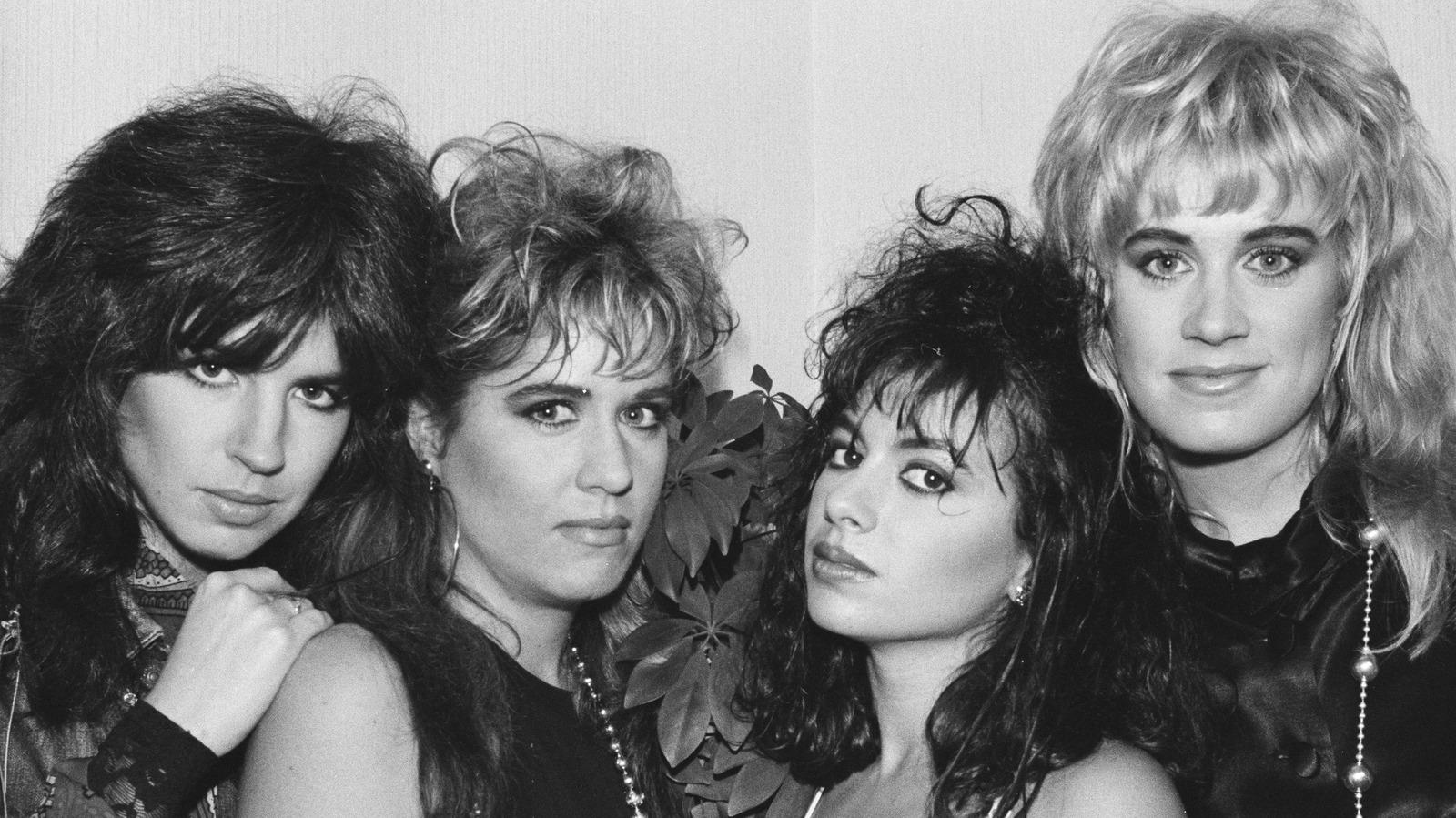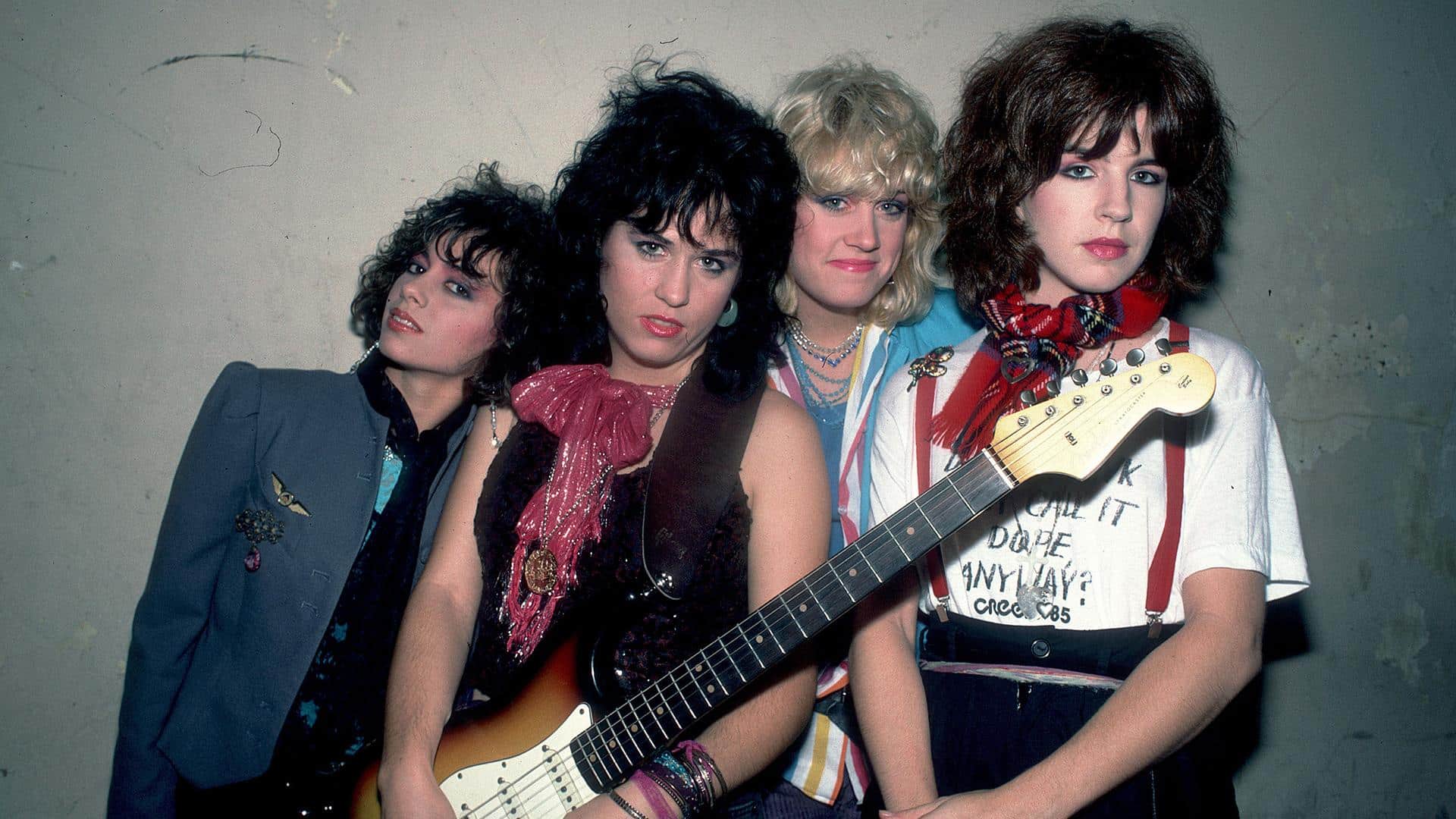Many music fans know The Bangles for their catchy hits, but fewer realize the group’s profound impact on women in rock.
In the 1980s, all-female bands were often seen as novelties rather than serious musicians.
The Bangles changed that perception with talent, songwriting, and chart-topping success.
This article will show how The Bangles helped pave the way for women in rock music.
We’ll look at their formation, rise to fame, and lasting influence on the industry.
You’ll discover how they challenged stereotypes and inspired future female artists.
We’ll also explore their musical style, key songs, and the obstacles they faced as women in a male-dominated field.
Join us as we examine The Bangles’ important role in shaping rock music history and empowering women artists.
The Rise of The Bangles
1. Early Struggles and Breakthroughs

The Bangles’ journey from local Los Angeles performers to chart-topping rock stars is a tale of perseverance and talent.
Formed in 1981, the group initially consisted of Susanna Hoffs, Debbi Peterson, Vicki Peterson, and Annette Zilinskas.
They started by playing small venues and clubs in L.A., facing the typical struggles of a new band in a competitive music scene.
Their first single, “Getting Out of Hand,” caught local attention but didn’t lead to immediate stardom.
The band grappled with limited resources and the extra challenge of being women in a male-dominated industry.
However, their unique sound and determination kept them going.
A key turning point came in 1983 when Columbia Records signed The Bangles.
This led to their debut album, “All Over the Place,” in 1984. While critically praised, the album achieved only moderate commercial success.
Singles like “Hero Takes a Fall” and “Going Down to Liverpool” showed promise but didn’t reach mainstream audiences.
The band built their fan base through tireless touring, including opening for Cyndi Lauper.
This hard work laid the foundation for their future success.
2. Major Hits and Albums

The Bangles’ big break came with their second album, “Different Light,” in 1986.
It featured “Manic Monday,” written by Prince, which shot to No. 2 on the Billboard Hot 100.
Later that year, “Walk Like an Egyptian” topped the charts, becoming a global hit known for its catchy tune and iconic video.
“Different Light” showcased the band’s ability to blend pop and rock, earning multi-platinum status.
Their follow-up album “Everything” (1988) continued this success with hits like “In Your Room” and the softer “Eternal Flame.”
The latter reached No. 1, demonstrating the band’s range and solidifying their place in rock history.
These albums and hit singles transformed The Bangles from struggling newcomers to influential rock stars.
They proved that an all-female band could create chart-topping hits and leave a lasting impact on the music industry.
Cultural and Musical Influence
1. Redefining Female Presence in Rock

The Bangles played a pivotal role in redefining female presence in rock music.
They challenged the male-dominated industry by achieving mainstream success as an all-female band.
Their talent in songwriting, instrumental skills, and vocal harmonies proved that women could excel in rock music creatively and commercially.
For instance, their ability to craft hit songs like “Manic Monday” and “Eternal Flame” showcased their musical prowess and broke stereotypes about female musicians.
Their success paved the way for all-female bands like The Go-Go’s and L7.
The Bangles inspired a generation of female musicians to pursue rock music, creating a more diverse and inclusive music scene.
Many later artists, such as Alanis Morissette and Garbage, have cited The Bangles as an influence, continuing to push boundaries in the industry.
2. Fashion and Style Impact

The Bangles’ fashion choices also became iconic, epitomizing the 1980s style.
Their look blended vintage and contemporary trends, setting them apart from other bands.
They popularized layered accessories, bold patterns, and unique hairstyles that fans eagerly emulated.
Their distinct style, seen in music videos and public appearances, influenced their fans and the broader pop culture, including fashion magazines and television.
Their fashion impact extended beyond music, contributing to the overall aesthetic of the 1980s.
The Bangles’ colorful, eclectic fashion became synonymous with the decade’s music scene, further cementing their status as style icons.
Their influence on music and fashion demonstrates how The Bangles left an indelible mark on 1980s pop culture, inspiring future musicians and fashion enthusiasts.
Musical Style and Contributions
1. Distinctive Sound

The Bangles crafted a distinctive sound that blended pop-rock with jangly guitar riffs.
Their music drew inspiration from 1960s rock bands like The Beatles and The Byrds, creating a unique sonic identity.
The band’s bright, jangly guitar sounds, often achieved with Rickenbacker guitars, became a hallmark of their style.
This was complemented by melodic bass lines and dynamic drumming, forming a cohesive and engaging musical foundation.
One of the most striking elements of The Bangles’ sound was their rich, multi-layered vocal harmonies.
Often compared to The Mamas & The Papas in terms of their lush harmonizing, these vocal arrangements became a signature element of their music.
The band’s focus on catchy melodies and memorable hooks, balanced with a mix of upbeat tempos and introspective ballads, further defined their musical approach.
2. Songwriting and Performances

The Bangles’ songwriting process was collaborative, with each member contributing to their repertoire.
Susanna Hoffs, Vicki Peterson, and Michael Steele all penned notable songs for the band.
However, some of their biggest hits came from outside collaborations, such as “Manic Monday,” written by Prince.
“Eternal Flame,” co-written by Hoffs with Billy Steinberg and Tom Kelly, showcased their talent for crafting emotive ballads.
Live performances were a crucial aspect of The Bangles’ success.
Known for their energy and musicality on stage, the band built a strong reputation through tours, including opening for Cyndi Lauper and later headlining their shows.
These performances not only solidified their reputation but also set new standards for live performances by female rock bands.
The Bangles’ unique blend of catchy pop-rock, rich harmonies, and engaging live shows set them apart in the music scene.
Their distinctive style and contributions to songwriting and performance impacted rock music, influencing future generations of musicians and setting a high bar for female-led bands in the industry.
The Role of Susanna Hoffs
1. Vocal Style and Stage Presence

Susanna Hoffs played a pivotal role in The Bangles, emerging as the charismatic lead singer and a key figure in the band’s success.
While The Bangles emphasized collective decision-making, Hoffs often became the group’s face due to her distinctive presence and vocal talents.
Her leadership was evident in significant performances and interviews, where she frequently took center stage.
Hoffs’ vocal style is characterized by warmth, clarity, and emotional delivery.
Her unique tone shines in songs like “Eternal Flame” and “Manic Monday,” where her ability to connect with audiences is particularly apparent.
Her live and recorded passionate performances significantly contributed to The Bangles’ overall sound and commercial success.
2. Beyond The Bangles

Beyond The Bangles, Hoffs pursued a solo career that showcased her musical versatility.
Her solo albums, including “When You’re a Boy” and “Someday,” received critical acclaim for their songwriting and vocal performances.
Collaborations with artists like Matthew Sweet on the “Under the Covers” series highlighted her ability to work across different musical styles.
Hoffs’ influence extends beyond her musical contributions.
She became a significant role model for women in the music industry, breaking gender barriers in rock.
Her confidence, independence, and creativity inspired countless female musicians and fans.
Hoffs’ impact on 1980s fashion and style trends further cemented her cultural significance.
Hoffs has consistently represented strength and talent in a male-dominated field throughout her career.
Her journey continues to inspire and shape the role of women in rock music today, proving that female artists can lead successful, long-lasting careers in the industry.
Challenges and Resilience
1. Internal Band Dynamics
The Bangles faced significant challenges in managing public perception and internal tensions.
Media often spotlighted Susanna Hoffs as the perceived leader, creating misconceptions about the band’s hierarchy.
This external focus led to internal struggles as the group tried to balance equal contributions against perceived favoritism.
The pressure from the media and fans strained personal relationships within the band, testing their group cohesion.
These tensions and exhaustion from extensive touring and creative differences eventually led to the band’s breakup.
Members pursued individual projects in the aftermath, initially reluctant to consider reuniting.
However, a mutual desire to create new music eventually catalyzed their reunion.
The band overcame past conflicts to re-form, receiving positive reception from fans and critics alike.
2. Sustaining Relevance
As the music industry evolved, The Bangles adapted to sustain their relevance.
They navigated the transition from physical album sales to digital downloads and streaming, embracing new technologies and platforms.
The band collaborated with contemporary artists and producers, incorporating modern sounds while maintaining their signature style.
This adaptability resulted in the release of new albums and singles post-reunion.
The Bangles’ influence and legacy continue to resonate.
Their hit songs remain popular in media and pop culture, inspiring newer generations of female musicians.
The band has been recognized for its contributions to rock music, and it continues to advocate for women in the industry through interviews and public appearances.
Looking forward, The Bangles maintain their relevance through live performances and re-releases of classic hits.
Their resilience in facing challenges and ability to adapt have ensured their ongoing impact on the music world, with the potential for future projects and collaborations to keep their legacy alive.
Legacy and Enduring Impact
1. Influence on Women in Music
The Bangles have left an indelible mark on the music industry, particularly in empowering and inspiring female musicians.
As one of the first all-female bands to achieve mainstream success, they challenged gender norms in the male-dominated rock scene.
Their triumph opened doors for future female rock artists, proving that women could excel in this genre.
Members of The Bangles, especially Susanna Hoffs, became role models for aspiring female musicians.
Their confidence, style and musical talent showcased women’s potential in rock music.
The band’s influence extended to mentoring and supporting upcoming female artists, fostering a more inclusive music industry.
Their music continues to resonate in popular culture.
Hits like “Walk Like an Egyptian,” “Manic Monday,” and “Eternal Flame” remain widely played and covered.
These songs frequently feature in films, TV shows, and commercials, introducing The Bangles to new generations.
Their iconic fashion and style, particularly the memorable eye movement in “Walk Like an Egyptian,” have impacted popular culture.
2. Recognition and Awards
Despite being eligible since 2007, The Bangles have yet to be inducted into the Rock & Roll Hall of Fame.
Fans and industry professionals advocate for their recognition, highlighting their contributions to rock music and gender equality.
Their unique blend of pop-rock, jangly guitar riffs, and rich vocal harmonies contributed significantly to rock music’s evolution.
The Bangles’ collaborations with artists like Prince and their influence on the Paisley Underground movement showcase their versatility and impact.
Their pioneering efforts in breaking gender barriers have set the stage for future generations of female rock musicians and cemented their place in music history.
Conclusion
In conclusion, The Bangles’ impact on rock music and women’s role in the industry cannot be overstated.
From their early struggles to chart-topping success, they proved that all-female bands could create lasting, influential music.
Their distinctive sound, memorable hits, and powerful stage presence challenged stereotypes and inspired countless musicians.
The Bangles’ legacy extends beyond their music.
They paved the way for future generations of female artists, showing that women could excel in every aspect of rock music – from songwriting to performance.
Their influence continues to resonate in popular culture, with their songs remaining beloved classics.
As we reflect on The Bangles’ journey, it’s clear they were more than just a successful band; they were pioneers who helped reshape the music industry.
Their story reminds us of the power of perseverance, talent, and breaking barriers in pursuit of artistic vision.





















